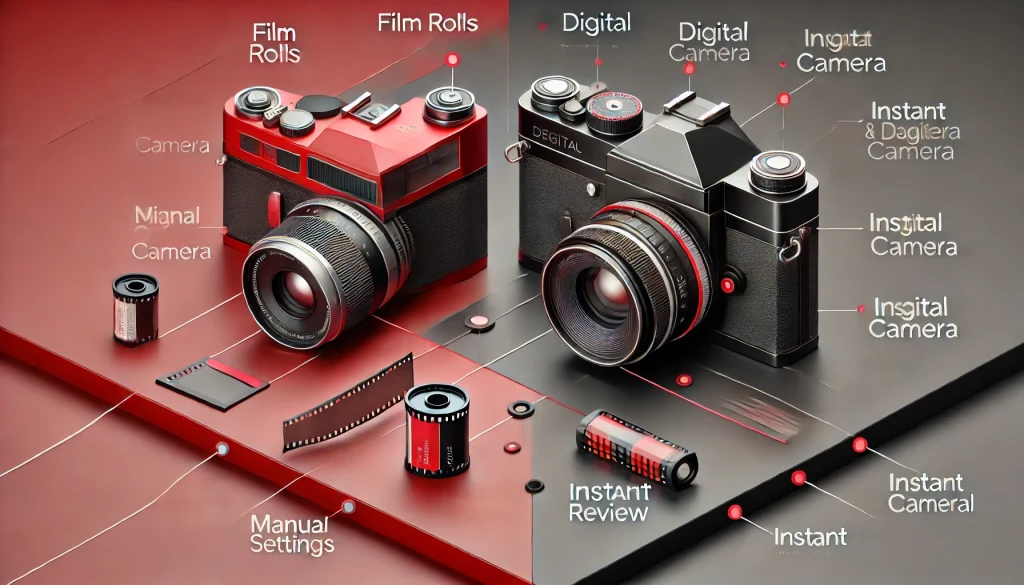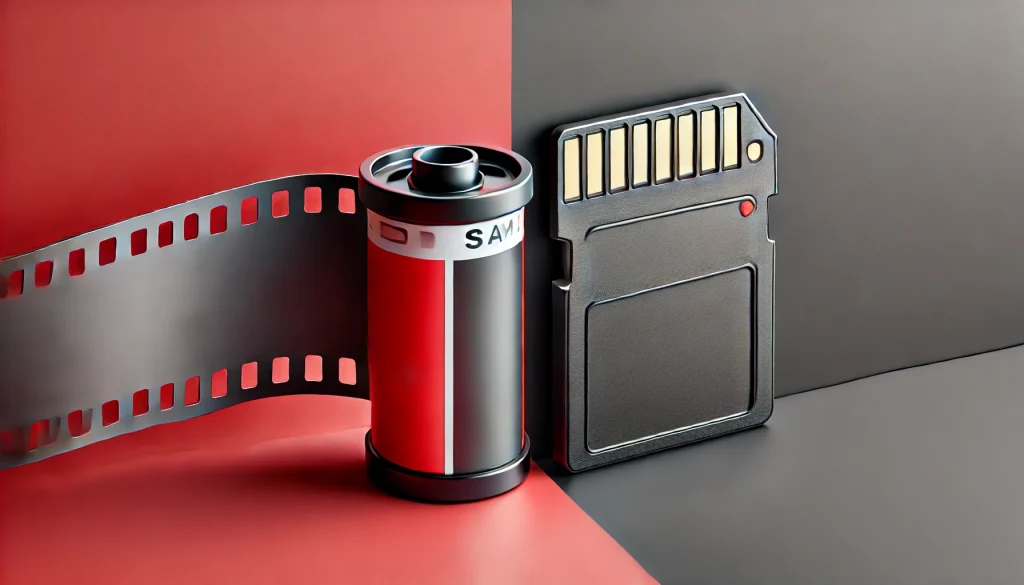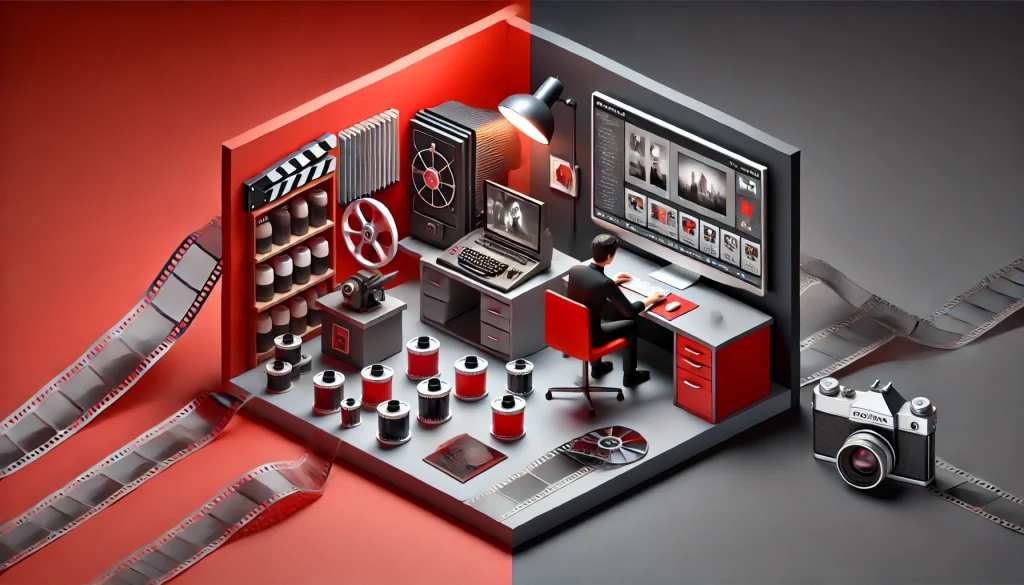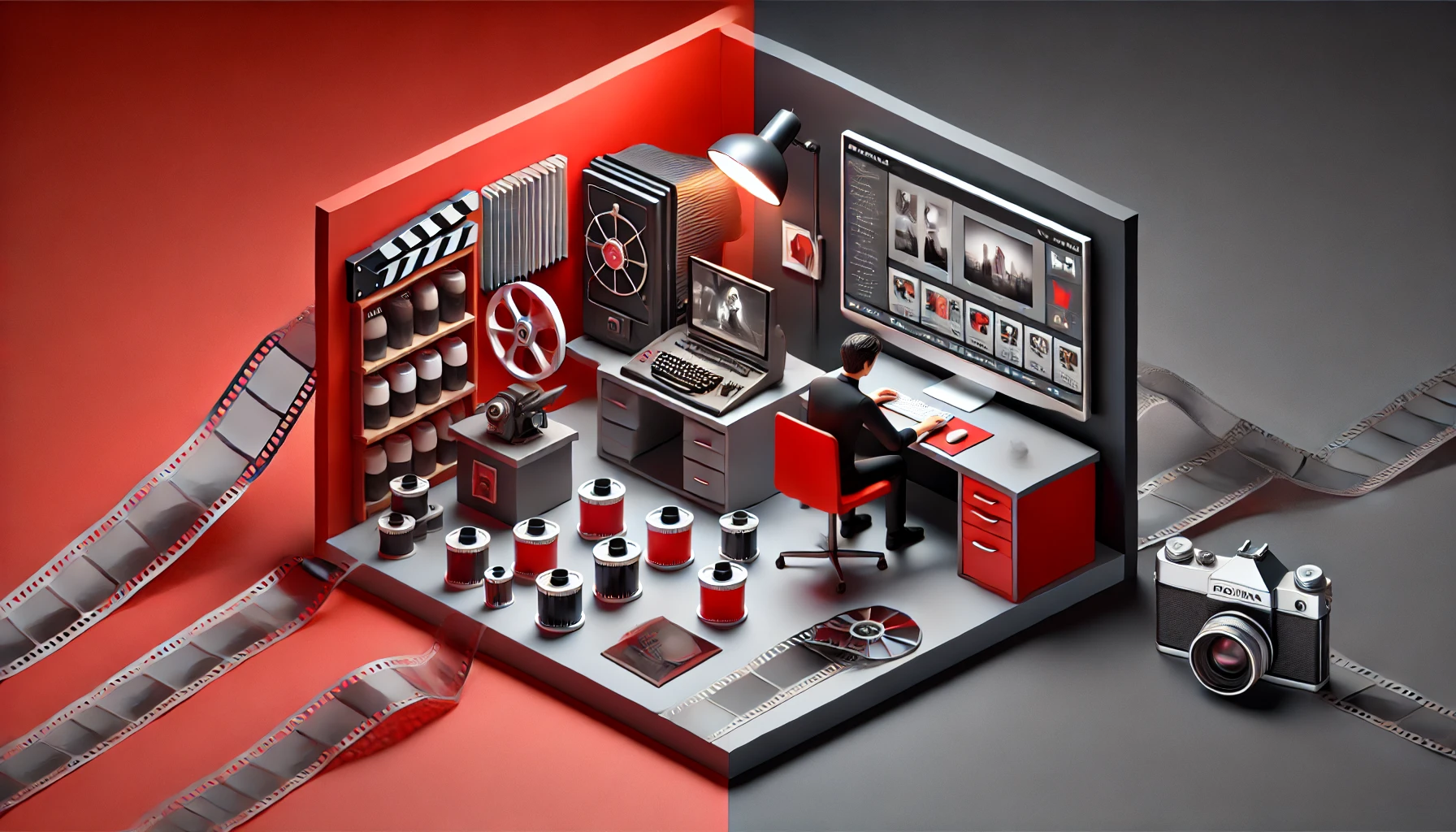
Introduction
Photography has transformed significantly over the last few decades, bringing enthusiasts and professionals alike into an ongoing debate about the merits of film versus digital photography. With recent developments in both fields, understanding the differences has become crucial for photographers looking to refine their craft. Film photography, with its classic analog touch, contrasts with the modern convenience of digital photography. As the photography landscape evolves, these developments present opportunities for both art form loyalists and innovative image creators to explore new ways of storytelling. This article offers a thorough comparison of film and digital photography, focusing on performance, pros and cons, and which medium might best suit your photography needs.
Overview
The film versus digital debate is rooted in both nostalgia and technical innovation. Film photography, which rose to prominence with formats such as 35mm, allowed photographers to capture images through chemical processing on physical film. This analog process is cherished by many for its authenticity, richness in color, and unique artistic output. On the other hand, digital photography has made significant leaps with its ease of use, instant review capabilities, and post-processing flexibility.
In today’s world, both film and digital cameras are widely used, with many photographers appreciating the strengths of each. Digital cameras dominate the consumer market, particularly in professional and commercial photography. Meanwhile, film photography has seen a resurgence in recent years among hobbyists and professionals who prefer its organic texture and depth. Each format offers distinct characteristics that make them appealing for different types of photography, be it landscapes, portraits, or cinematography. Understanding these differences will help you decide which medium best aligns with your creative vision.
Pros and Cons of Film vs Digital Photography
| Aspect | Film Photography | Digital Photography |
|---|---|---|
| Pros | – Unique visual quality with rich tones and dynamic textures. – Grainy texture adds character and timelessness. – Disciplined approach due to limited shots, leading to intentional and creative work. – More natural-looking skin tones, ideal for portraits. | – Instant feedback allows real-time adjustments to exposure, composition, and focus. – Cost-efficient: no ongoing film or development expenses. – Unparalleled post-production flexibility for editing exposure, color balance, and more. – Simplified storage and sharing with memory cards and cloud. |
| Cons | – High costs for film and development. – Cannot instantly review or adjust shots; requires waiting for film to be processed. – Developing film requires specialized equipment and chemicals, which may be difficult for beginners. | – Oversaturation of images may lead to a lack of thoughtful composition and technique. – Digital images can lack the organic feel of film, with some describing them as too sharp or clinical. – Digital cameras depreciate faster due to rapid technological advancements. |
In-Depth Analysis of Film vs Digital Photography

Design and Aesthetic Appeal
When it comes to design, film cameras often have a vintage, classic aesthetic that many photographers find appealing. The tactile nature of loading film, adjusting manual settings, and hearing the click of the shutter provides a more engaging, hands-on experience. Digital cameras, on the other hand, come in a wide variety of styles, from compact point-and-shoots to full-frame professional cameras, offering more versatility in design. Modern digital cameras are sleek, lightweight, and often packed with features like touchscreens and electronic viewfinders, making them highly practical for everyday use.
Functionality and Ease of Use
In terms of functionality, digital cameras clearly outshine their film counterparts. With auto-focus, live view modes, and digital image stabilization, digital cameras make it easier to capture sharp, well-exposed photos in a variety of conditions. The ability to shoot in RAW format allows for greater flexibility in post-production, which is a significant advantage for professional photographers. Film cameras, while more challenging to master, offer a unique experience that some photographers prefer. The limitations of film can push photographers to think more critically about exposure and composition, thus improving their overall skills.
Performance and Image Quality
The debate over image quality between film and digital continues to divide photographers. Film offers better color depth and dynamic range, especially when using formats like 35mm film. The organic grain structure of film adds a texture that digital photography often lacks. On the other hand, digital sensors have vastly improved in recent years, offering exceptional image quality with high resolution, sharpness, and clarity. Digital cameras also excel in low-light situations, thanks to their adjustable ISO capabilities, something that film struggles with.
Longevity and Preservation
When it comes to preserving your work, film has a slight edge. Properly stored film can last for decades without degradation, while digital files are susceptible to corruption and data loss if not backed up correctly. However, digital photography allows for easier duplication and sharing, reducing the risk of losing your images altogether. Many photographers use both mediums, enjoying the timeless quality of film while relying on digital backups for convenience.
Comparison of Film vs Digital Photography

Film and digital photography each offer unique benefits that cater to different types of photographers. Film photography is ideal for those who appreciate a slower, more deliberate process and enjoy the aesthetic qualities of grain, color depth, and limited editing options. It’s also a favorite among artists and hobbyists who value the tangible aspects of working with physical negatives and prints.
Digital photography, by contrast, is more suited for professionals or anyone who requires speed, convenience, and adaptability. The ability to shoot, review, and edit in real time makes digital a superior choice for commercial work, event photography, and situations where instant results are essential.
In terms of costs, digital is far more economical in the long run, especially for high-volume shooters. The upfront investment in a camera body and lenses can be pricey, but the ability to store thousands of images without ongoing costs like film development makes digital appealing to most.
Conclusion
The film versus digital debate will continue as long as both mediums exist. Film offers an analog warmth and nostalgia that digital can’t quite replicate, while digital provides unparalleled flexibility and efficiency. The right choice depends on your individual needs, budget, and artistic preferences. As technology continues to evolve, we can expect further developments in both film and digital photography, making the future of photography even more exciting.
Rating
4.5/5 Stars – Digital photography is versatile, fast, and user-friendly. Film retains its unique, artistic edge, but requires patience and higher costs.
Resources
- Film Lifestyle. Modern Innovations in Photography.
- Masterclass. Film Photography: A Timeless Artform.
- Shotkit. A Photographer’s Perspective. Film vs Digital Photography
- StudioBinder. The Pros and Cons Explained. Film vs Digital Photography
- The Darkroom. A Complete Technical Comparison.

Brijesh Gohil is the founder of Tech Brij, A popular Tech Blog which is focused on Tech tips & Buying Guides. You can follow him on Facebook, Twitter, Google + & LinkedIn.

